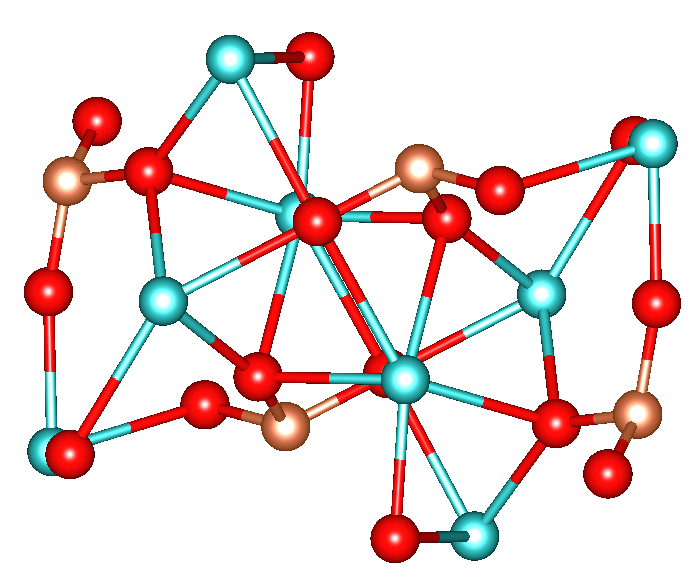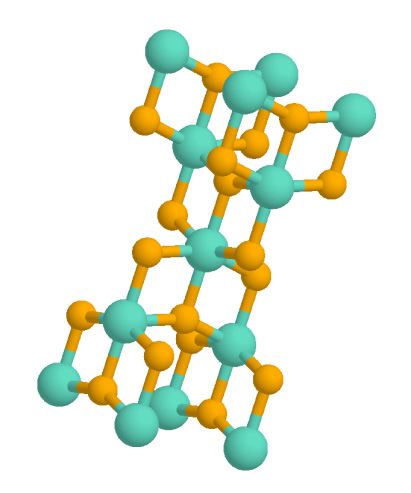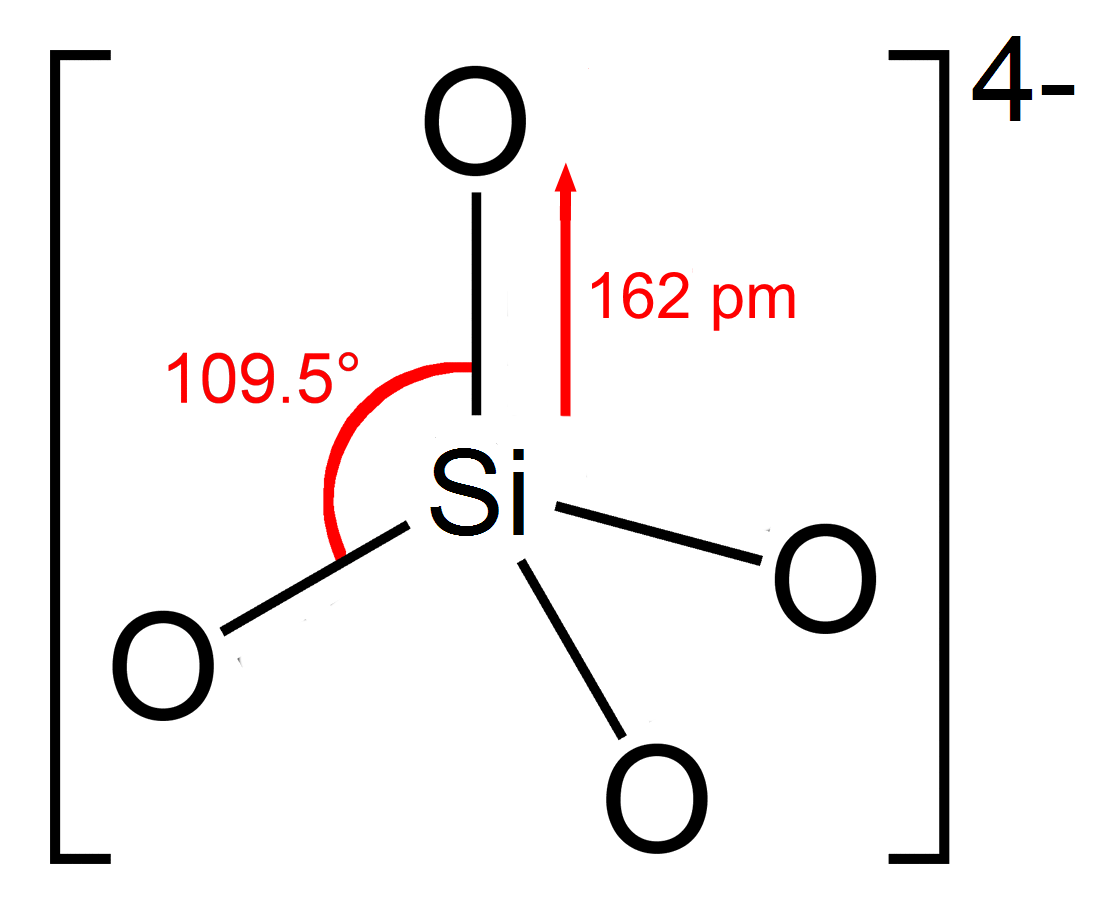|
Belite
Belite is an industrial mineral important in Portland cement manufacture. Its main constituent is dicalcium silicate, Ca2SiO4, sometimes formulated as 2 CaO · SiO2, SiO2 (C2S in cement chemist notation). Etymology The name was given by Alfred Elis Törnebohm in 1897 to a crystal identified in microscopic investigation of Portland cement. Belite is a name in common use in the cement industry, but is not a recognised mineral name. It occurs naturally as the mineral larnite, the name being derived from Larne, Northern Ireland, the closest town to Scawt Hill where it was discovered. Composition and structure The belite found in Portland cement differs in composition from pure dicalcium silicate. It is a solid solution and contains minor amounts of other oxides besides CaO and SiO2. A typical composition:Taylor H.F.W. (1990), ''Cement Chemistry'', Academic Press, 1990, , pp. 10-11. Based on this, the formula can be expressed as Ca1.94Mg0.02Na0.01K0.03Fe0.02Al0.07Si0.90P0.01O ... [...More Info...] [...Related Items...] OR: [Wikipedia] [Google] [Baidu] |
Cement Chemist Notation
Cement chemist notation (CCN) was developed to simplify the formulas cement chemists use on a daily basis. It is a shorthand way of writing the chemical formula of oxides of calcium, silicon, and various metals. Abbreviations of oxides The main oxides present in cement (or in glass and ceramics) are abbreviated in the following way: Conversion of hydroxides in oxide and free water For the sake of mass balance calculations, hydroxides present in hydrated phases found in hardened cement paste, such as in portlandite, Ca(OH)2, must first be converted into oxide and water. To better understand the conversion process of hydroxide anions in oxide and water, it is necessary to consider the autoprotolysis of the hydroxyl anions; it implies a proton exchange between two OH−, like in a classical acid–base reaction: : + → + or also, :2 OH− → O2− + H2O For portlandite this gives thus the following mass balance: :Ca(OH)2 → CaO + H2O Thus portlandite can be written as ... [...More Info...] [...Related Items...] OR: [Wikipedia] [Google] [Baidu] |
Dicalcium Silicate
Calcium silicate can refer to several silicates of calcium including: *CaO·SiO2, wollastonite (CaSiO3) *2CaO·SiO2, larnite (Ca2SiO4) *3CaO·SiO2, alite or (Ca3SiO5) *3CaO·2SiO2, (Ca3Si2O7). This article focuses on Ca2SiO4, also known as calcium orthosilicate, or by the shortened trade name Cal-Sil/Calsil. All calcium silicates are white free-flowing powders. Being strong, cheap and nontoxic, they are components of important structural materials. Production and occurrence Calcium silicates are produced by treating calcium oxide and silica in various ratios. Their formation is relevant to Portland cement. Calcium silicate is a byproduct of the Pidgeon process, a major route to magnesium metal. The process converts a mixture of magnesium and calcium oxides as represented by the following simplified equation: : The calcium oxide combines with silicon as the oxygen scavenger, yielding the very stable calcium silicate and releasing volatile (at high temperatures) magnesium meta ... [...More Info...] [...Related Items...] OR: [Wikipedia] [Google] [Baidu] |
Calcium Silicate
Calcium silicate can refer to several silicates of calcium including: *CaO·SiO2, wollastonite (CaSiO3) *2CaO·SiO2, larnite (Ca2SiO4) *3CaO·SiO2, alite or (Ca3SiO5) *3CaO·2SiO2, (Ca3Si2O7). This article focuses on Ca2SiO4, also known as calcium orthosilicate, or by the shortened trade name Cal-Sil/Calsil. All calcium silicates are white free-flowing powders. Being strong, cheap and nontoxic, they are components of important structural materials. Production and occurrence Calcium silicates are produced by treating calcium oxide and silicon dioxide, silica in various ratios. Their formation is relevant to Portland cement. Calcium silicate is a byproduct of the Pidgeon process, a major route to magnesium metal. The process converts a mixture of magnesium and calcium oxides as represented by the following simplified equation: : The calcium oxide combines with silicon as the oxygen scavenger, yielding the very stable calcium silicate and releasing volatile (at high temperatures) ... [...More Info...] [...Related Items...] OR: [Wikipedia] [Google] [Baidu] |
Industrial Mineral
Industrial resources (minerals) are geological materials that are mined for their commercial value, which are not fuel ( fuel minerals or mineral fuels) and are not sources of metals (metallic minerals) but are used in the industries based on their physical and/or chemical properties. They are used in their natural state or after beneficiation either as raw materials or as additives in a wide range of applications. Examples and applications Typical examples of industrial rocks and minerals are limestone, clays, sand, gravel, diatomite, kaolin, bentonite, silica, barite, gypsum, and talc. Some examples of applications for industrial minerals are construction, ceramics, paints, electronics, filtration, plastics, glass, detergents and paper. In some cases, even organic materials (peat) and industrial products or by-products (cement, slag, silica fume) are categorized under industrial minerals, as well as metallic compounds mainly utilized in non-metallic form (as an example ... [...More Info...] [...Related Items...] OR: [Wikipedia] [Google] [Baidu] |
Clinker (cement)
image:LDClinkerScaled.jpg, 200px, Typical clinker nodules image:Hot Clinker 2.jpg, 200px, Hot clinker Cement clinker is a solid material produced in the manufacture of portland cement as an intermediary product. Clinker occurs as lumps or nodules, usually to in diameter. It is produced by sintering (fusing together without melting to the point of liquefaction) limestone and aluminosilicate materials such as clay during the cement kiln stage. Composition and preparation The Portland clinker essentially consists of four minerals: two calcium silicates, alite (Ca3SiO5) and belite (Ca2SiO4), along with tricalcium aluminate (Ca3Al2O6) and calcium aluminoferrite (Ca2(Al,Fe)2O5). These main mineral phases are produced by heating at high temperature clays and limestone. The major raw material for the clinker-making is usually limestone mixed with a second material containing clay as a source of alumino-silicate. An impure limestone containing clay or silicon dioxide (SiO2) can be used. ... [...More Info...] [...Related Items...] OR: [Wikipedia] [Google] [Baidu] |
Sodium Oxide
Sodium oxide is a chemical compound with the formula . It is used in ceramics and glasses. It is a white solid but the compound is rarely encountered. Instead "sodium oxide" is used to describe components of various materials such as glasses and fertilizers which contain oxides that include sodium and other elements. Sodium oxide is a component. Structure The structure of sodium oxide has been determined by X-ray crystallography. Most alkali metal oxides (M = Li, Na, K, Rb) crystallise in the antifluorite structure. In this motif the positions of the anions and cations are reversed relative to their positions in , with sodium ions tetrahedrally coordinated to 4 oxide ions and oxide cubically coordinated to 8 sodium ions. Preparation Sodium oxide is produced by the reaction of sodium with sodium hydroxide, sodium peroxide, or sodium nitrite: : To the extent that NaOH is contaminated with water, correspondingly greater amounts of sodium are employed. Excess sodium is disti ... [...More Info...] [...Related Items...] OR: [Wikipedia] [Google] [Baidu] |
Potassium Oxide
Potassium oxide ( K O) is an ionic compound of potassium and oxygen. It is a base. This pale yellow solid is the simplest oxide of potassium. It is a highly reactive compound that is rarely encountered. Some industrial materials, such as fertilizers and cements, are assayed assuming the percent composition that would be equivalent to K2O. Production Potassium oxide is produced from the reaction of oxygen and potassium; this reaction affords potassium peroxide, K2O2. Treatment of the peroxide with potassium produces the oxide: : Alternatively and more conveniently, K2O is synthesized by heating potassium nitrate with metallic potassium: : Other possibility is to heat potassium peroxide at 500 °C which decomposes at that temperature giving pure potassium oxide and oxygen. : Potassium hydroxide cannot be further dehydrated to the oxide but it can react with molten potassium to produce it, releasing hydrogen as a byproduct. : Properties and reactions K2O crystallises ... [...More Info...] [...Related Items...] OR: [Wikipedia] [Google] [Baidu] |
Titanium Dioxide
Titanium dioxide, also known as titanium(IV) oxide or titania , is the inorganic compound derived from titanium with the chemical formula . When used as a pigment, it is called titanium white, Pigment White 6 (PW6), or Colour Index International, CI 77891. It is a white solid that is insoluble in water, although mineral forms can appear black. As a pigment, it has a wide range of applications, including paint, sunscreen, and food coloring. When used as a food coloring, it has E number E171. World production in 2014 exceeded 9 million tonnes. It has been estimated that titanium dioxide is used in two-thirds of all pigments, and pigments based on the oxide have been valued at a price of $13.2 billion. Structure In all three of its main dioxides, titanium exhibits Octahedral molecular geometry, octahedral geometry, being bonded to six oxide anions. The oxides in turn are bonded to three Ti centers. The overall crystal structures of rutile and anatase are tetragonal in symmetry ... [...More Info...] [...Related Items...] OR: [Wikipedia] [Google] [Baidu] |
Phosphorus Pentoxide
Phosphorus pentoxide is a chemical compound with molecular formula Phosphorus, P4Oxygen, O10 (with its common name derived from its empirical formula, P2O5). This white crystalline solid is the anhydride of phosphoric acid. It is a powerful desiccant and dehydration reaction, dehydrating agent. Structure Phosphorus pentoxide crystallizes in at least four forms or polymorphism (materials science), polymorphs. The most familiar one, a metastable form (shown in the figure), comprises molecules of P4O10. Weak van der Waals forces hold these molecules together in a hexagonal lattice (However, in spite of the high symmetry of the molecules, the crystal packing is not a close packing). The structure of the P4O10 cage is reminiscent of adamantane with ''T''d symmetry point group. It is closely related to the corresponding anhydride of phosphorous acid, phosphorus trioxide, P4O6. The latter lacks terminal oxo groups. Its density is 2.30 g/cm3. It boils at 423 °C under atmospheric pre ... [...More Info...] [...Related Items...] OR: [Wikipedia] [Google] [Baidu] |
Sulfate
The sulfate or sulphate ion is a polyatomic anion with the empirical formula . Salts, acid derivatives, and peroxides of sulfate are widely used in industry. Sulfates occur widely in everyday life. Sulfates are salts of sulfuric acid and many are prepared from that acid. Spelling "Sulfate" is the spelling recommended by IUPAC, but "sulphate" was traditionally used in British English. Structure The sulfate anion consists of a central sulfur atom surrounded by four equivalent oxygen atoms in a tetrahedral arrangement. The symmetry of the isolated anion is the same as that of methane. The sulfur atom is in the +6 oxidation state while the four oxygen atoms are each in the −2 state. The sulfate ion carries an overall charge of −2 and it is the conjugate base of the bisulfate (or hydrogensulfate) ion, , which is in turn the conjugate base of , sulfuric acid. Organic sulfate esters, such as dimethyl sulfate, are covalent compounds and esters of sulfuric acid. The tetrahedral ... [...More Info...] [...Related Items...] OR: [Wikipedia] [Google] [Baidu] |
Orthosilicate
In chemistry, orthosilicate is the anion , or any of its salts and esters. It is one of the silicate anions. It is occasionally called the silicon tetroxide anion or group.C. A. Kumins, and A. E. Gessler (1953), "Short-Cycle Syntheses of Ultramarine Blue". ''Indunstrial & Engineering Chemistry'', volume 45, issue 3, pages 567–572. Orthosilicate salts, like sodium orthosilicate, are stable, and occur widely in nature as silicate minerals, being the defining feature of the nesosilicates. Olivine, a magnesium or iron(II) orthosilicate, is the most abundant mineral in the upper mantle. The orthosilicate anion is a strong base, the conjugate base of the extremely weak orthosilicic acid (p''K''a2 = 13.2 at 25 °C). This equilibrium is difficult to study since the acid tends to decompose into a hydrated silica condensate. Structure The orthosilicate ion or group has tetrahedral shape, with one silicon atom surrounded by four oxygen atoms. In the anion, each oxyge ... [...More Info...] [...Related Items...] OR: [Wikipedia] [Google] [Baidu] |
Magnesium Oxide
Magnesium oxide (MgO), or magnesia, is a white hygroscopic solid mineral that occurs naturally as periclase and is a source of magnesium (see also oxide). It has an empirical formula of MgO and consists of a lattice of Mg2+ ions and O2− ions held together by ionic bonding. Magnesium hydroxide forms in the presence of water (MgO + H2O → Mg(OH)2), but it can be reversed by heating it to remove moisture. Magnesium oxide was historically known as magnesia alba (literally, the white mineral from Magnesia), to differentiate it from '' magnesia nigra'', a black mineral containing what is now known as manganese. Related oxides While "magnesium oxide" normally refers to MgO, the compound magnesium peroxide MgO2 is also known. According to evolutionary crystal structure prediction, MgO2 is thermodynamically stable at pressures above 116 GPa (gigapascals), and a semiconducting suboxide Mg3O2 is thermodynamically stable above 500 GPa. Because of its stability, MgO is used as a mod ... [...More Info...] [...Related Items...] OR: [Wikipedia] [Google] [Baidu] |





